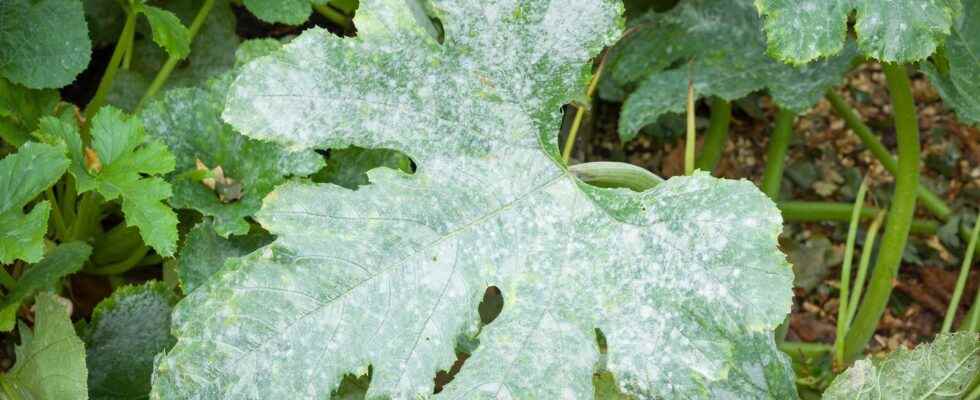Powdery mildew is a disease cryptogamic which causes rot. It settles just as well on flowers as on fuchsias or pelargoniums than shrubs such as roses or vegetables such as tomatoes where the gourds. What are the symptoms and how to treat plants naturally to stop the spread?
What is powdery mildew?
Also called powdery mildew or white rot, powdery mildew is a mushroom of the Erysiphaceae family, which grows with favorable weather conditions: heat (between 15 and 32°C), high humidity and temperature differences between day and night. These conditions favor the development of microscopic fungi which settle on all parts of many plants. treesshrubs, fruit trees, perennials, plants annual, vegetables and many others can be affected by powdery mildew. The first powdery mildews appear in the spring, when the temperatures warm up and the humidity of the spring rains is still present. Autumn is also a season conducive to the appearance of powdery mildew.
How to recognize powdery mildew?
Powdery mildew is characterized by the presence of white or grayish felting, much like flour, on young leaves, buds and stems. Once this whitish down is installed, the different parts of the plants tend to deform and curl up. These symptoms are easily noticed with regular observation of the garden. Powdery mildew causes slower plant growth and lower yields.
How to fight against powdery mildew?
It is possible to treat preventively and then as soon as the first symptoms are detected. Here are some tips to prevent the appearance of powdery mildew:
- to the plantingbe sure to leave reasonable distances between the plants in order to guarantee good ventilation and to prevent powdery mildew from passing from one plant to another, with its very volatile spores;
- not’water not too much foliage, but especially the feet;
- place a mulch which will retain moisture;
- for greenhouse crops, ventilate well to avoid atmosphere confined;
- remove the contaminated parts then throw them away or burn them (if you have permission), but do not put them on the pile of compost. This will stop the spread.
Several treatments are available to you:
- The horsetail preventively and curative. To make a decoction of horsetail, mix 1 kilo of fresh plant or 150 grams of dry leaves in 10 liters of rainwater then let the mixture macerate for at least 24 hours. Boil for 30 minutes then strain. Spray the 5% diluted decoction once every 15 days.
- the milk. In a sprayer, mix half a liter of milk with 4.5 liters of water. Stir well and spray plants covered with powdery mildew. Milk has virtues antifungals. Do this once a week until the white felting is completely gone.
- L’garlic. Make a decoction with 100 grams ofgarlic crushed, macerated in 1 liter of water for 24 hours. Boil it then filter the preparation. Dilute it 20%.
Other treatments based on bicarbonate of weldedof sulfur oressential oils are possible. Check with specialty stores.
You will also be interested
Interested in what you just read?
